Washington Co., WI – If only these stones could talk because the owner of the home in Washington County, WI would like to know why more than 20 headstones were buried in his backyard.
Click HERE to SUBSCRIBE to FREE local news at
Washington County Insider on YouTube
The stones, some granite and one marble, were found lying flat and side by side in a sort of channel along the fence line. According to plat maps, the property, now located in a neighborhood, used to be a vast farm field.
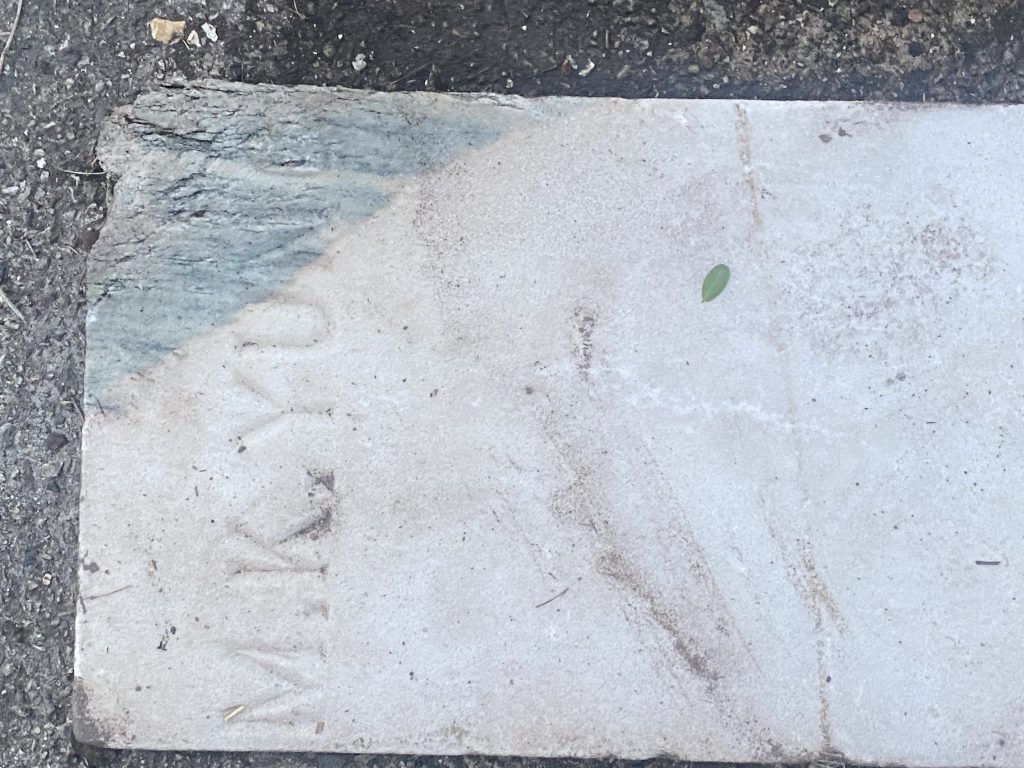 The homeowner explained how he was working the soil for some plants on a Friday afternoon when… “You could see that top row was all exposed, but it was only the thin long pieces. The actual gravestones with writing on them were the bottom (first) layer so we didn’t find those ones until we unearthed the top two layers of long skinny stones.
The homeowner explained how he was working the soil for some plants on a Friday afternoon when… “You could see that top row was all exposed, but it was only the thin long pieces. The actual gravestones with writing on them were the bottom (first) layer so we didn’t find those ones until we unearthed the top two layers of long skinny stones.
“They were lying flat stacked three high. They were very purposely stacked to line the garden bed.”
The “skinny stones” according to Scott Schmidt from Schmidt Funeral Home were known as “curbing” which would outline a lot or form a frame around the cemetery space.
“If you remember the church would give you a space in the cemetery, for free or maybe $1, but it was your job to come in to weed it, plant flowers, or make sure it was kept up in a way that was a fitting of a cemetery,” he said.
“The church didn’t want it to become overgrown that’s why there’s a lot of those old cemeteries and borders around the actual lots to signify this is our spot, this is where our loved ones are buried.”

Two of the stones were markers for children. Ottilia M. Vollmar was born June 5, 1861, and died less than two years later on April 9, 1863. The stone features an image of a lamb resting under what appears to be clouds or a curtain and a rosebud. Both designs were common on children’s stones. The word ‘Dau’ is German for daughter. There is also a poem or verse written in German at the bottom of the stone.

The second child’s stone was for William Lembeke. The German word ‘Gest’ translates to ‘died’ and is followed by the date July 5, 1862. The rest translates to 7 years, 11 months, 16 days. While the top right corner of the stone is missing, the image appears to be a rosebud underneath an image of a fern leaf. The stone reads, “Son of Ernst & Anna Lembeke.”
A search of the website findagrave.com did not turn up a location for either child.

Wally Miller from Miller Monument in Jackson, Wi believed there was nothing buried in the yard; he said in the past stones that were in disrepair were often removed from a cemetery. “The cemetery had the right to remove a damaged stone,” he said. “Or if it fell over, the cemetery was not responsible to maintain it. If you got the property free, you maintain it. I’ve destroyed old stones for people in the past,” he said.
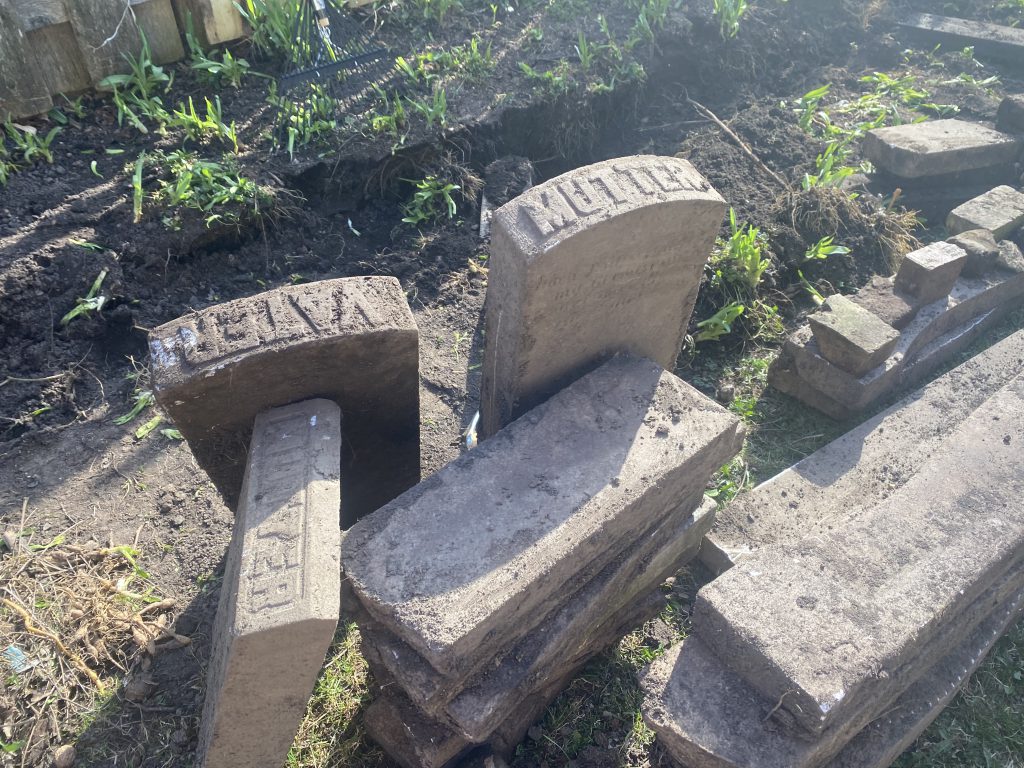
The stones with Mutter and Vater (mother and father in German) were simple stones, according to Miller, that served as markers. “These just marked the grave,” he said. “Because in the 1800’s things took longer to manufacture, so they would go to the local monument guy, and he would order the stone and it would take 2 to 5 years to make. As things changed, with the push mower and gas mower… these were an obstacle.”
Miller recounted a story from an elderly man at church. “When he was in school the neighbor kids would bring a goat or a lamb or a calf and they would tie it on their family plot. At lunch they would go give it water and after two or three days they would take it home, but the family had to maintain that burial plot. You got that lot for free from the church and you had to take care of it. There was no such thing as push mower, it was up to the family,” he said.
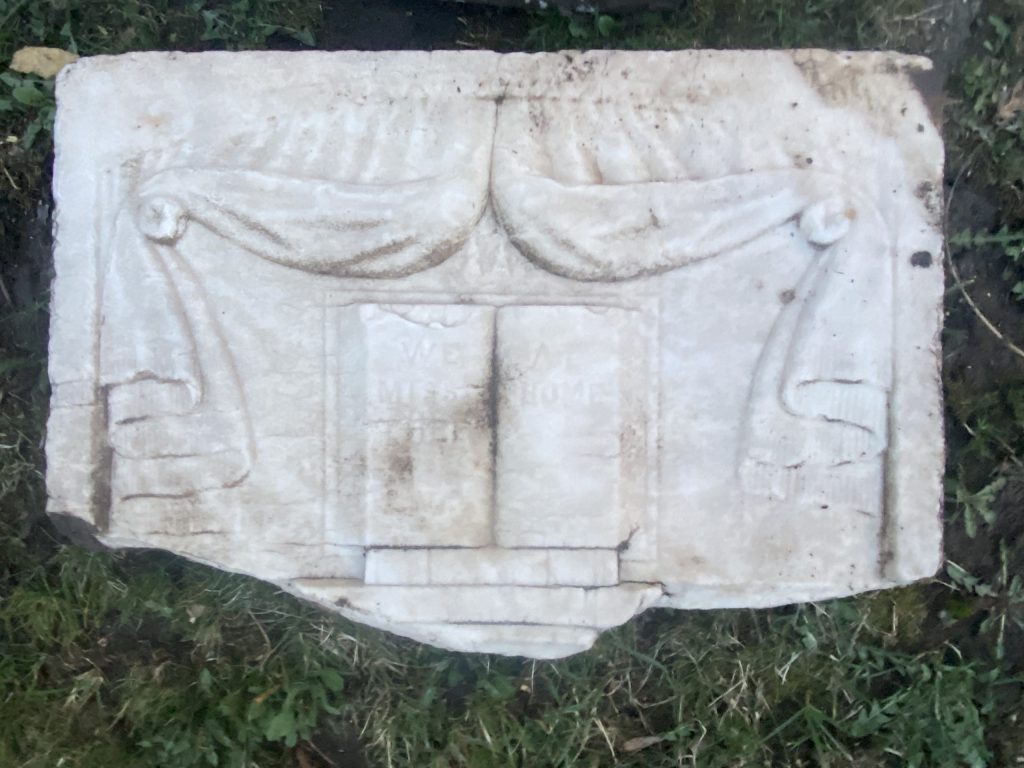
Considering the way the stones were stacked, Schmidt believed the find has no nefarious ties to any wrongdoing. “I highly doubt somebody stole those from a cemetery,” he said. “What was very, very common back in the day, people would bury their family back in the corner of the property,” he said. “My guess is instead of having all these little individual stones, they replaced them and put a larger stone with multiple names on. But like I said, it could really be many different things.”
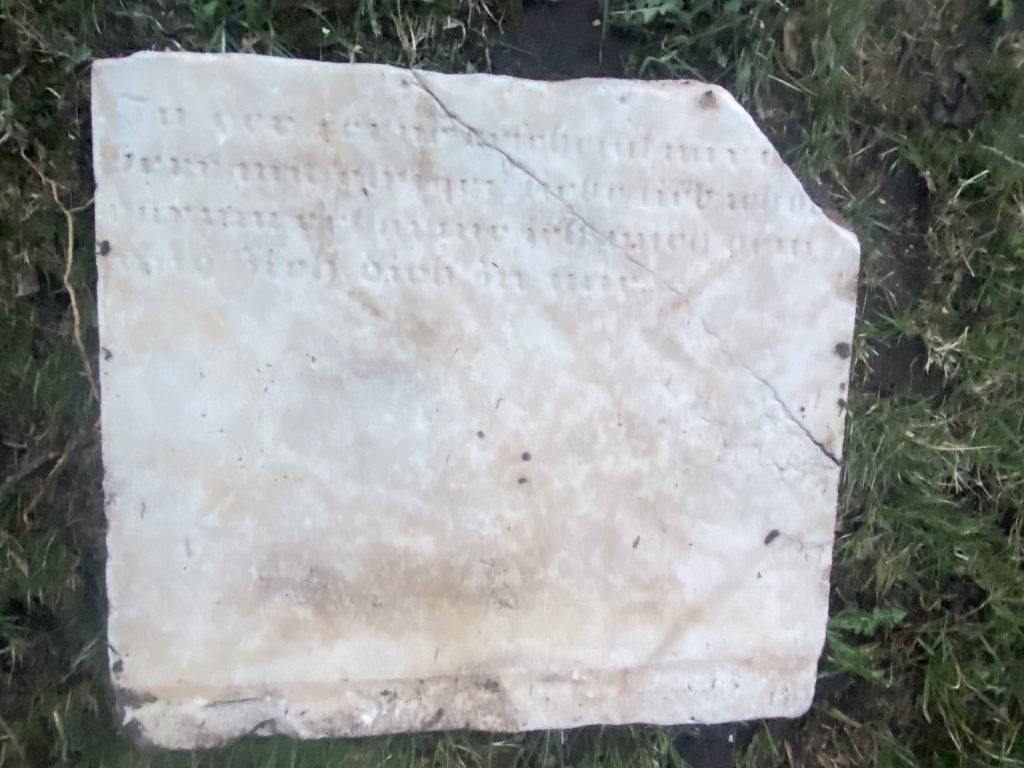
Some of the stones have etched on the top Mutter, Vater, Emma and Elisareth.







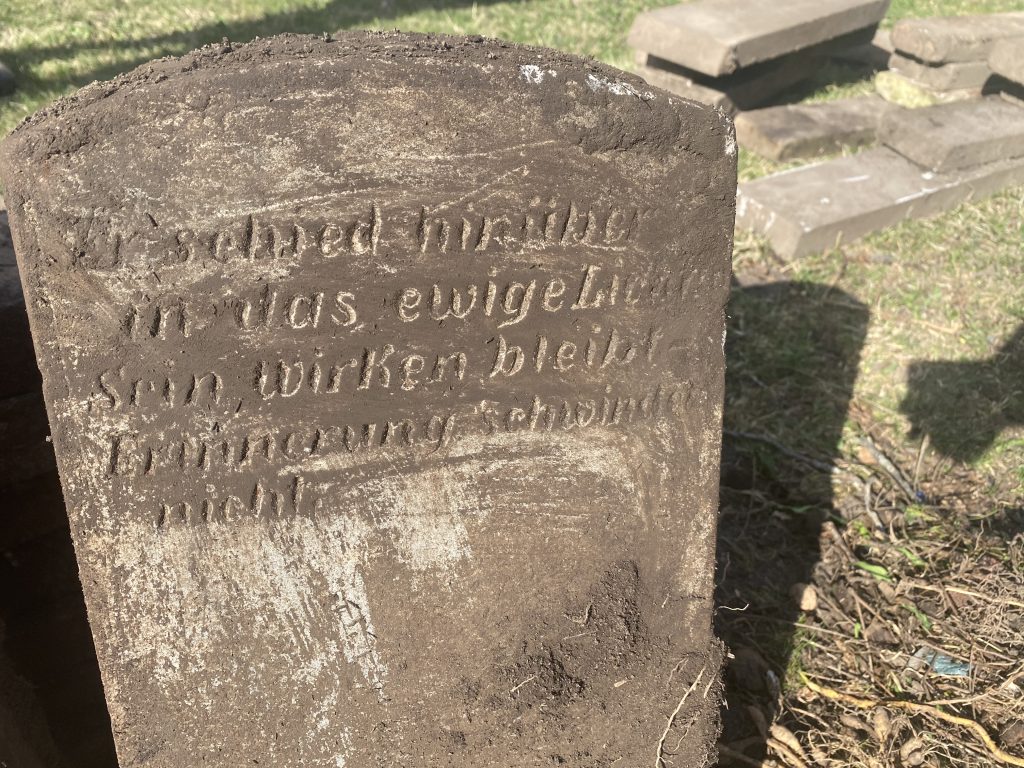
A rough translation of some of the German writing on the stone. Tried using THIS website to help decipher.
“in this eternal …. be remains effective …”

Mixed in with the headstones are long stone slabs measuring 4 feet. There are also small yellowish bricks.
The homeowner said, “Because this is so random with no dates and no names, I think it has to be somebody who just had access to old headstones.”
In an effort to delve into the history of the location some plat maps and quit claim deeds and transactions were reviewed. Details from the original documents were typed in blue ink on a very light weight tissue paper material.

Some of the transactions for the parcel included:
- Transferring 68.57 acres of undivided land on September 17th, 1845 from Charles Higgins to Byron Kilbourn for $1.
- Transferring 100 acres of equal and undivided land on October 23rd, 1845 from Charles Higgins to James Kneeland.
- Warranty deed. Cons. $500.00 conveys the undivided 1/8 parcel … and other real estate. Dated Aug. 17th 1846 from Charles Higgins & Elizabeth, his wife to William Wightman
- Quit claim deed. Cons. $10.00 Conveys all their right, title and interest … and other real estate. Dated and acknowledged June 19th, 1854. Michael Dousman & Elisa, his wife to Erastus B. Wolcott.

On a history note, Schmidt said it was not uncommon for cemeteries to be moved. He cited a parcel in West Bend, WI.
“Where McDonald’s and Aldi’s is now on S. Main Street that was Holy Angel Cemetery years and years and years and years and years ago,” he said.
“I believe it was 50 years ago when they excavated all those graves and moved them to the current cemetery on the corner of Decorah Road and Main Street,” he said. “I know my grandpa, my dad and my uncle all helped with that project; they all helped move vaults over from the old cemetery.”
Jim Schmidt, caretaker at Holy Angels Parish, said the old Holy Angels cemetery was moved in 1972.
Editor’s note: The name and location of the property in this story are being withheld at this moment at the request of the owner of the parcel.
























“dau” is not a German word for daughter. It is an abbreviation for the word “daughter” “Tochter” is German for daughter.
The stones with just “Mutter”, “Vater” or a name are most likely footstones, marking the individual grave with a main marker having the full names and dates of the deceased.
Russ Darrow was building on that corner in 64′, couldn’t have moved in 72′. Maybe 1962 perhaps?
The land from Main Street and Decorah Road southwest was a farm that was originally owned by Leander Schmidt’s parents then sold to B C Ziegler upon Leander’s father’s death in about 1926, if memory serves me correctly. I believe the Schmidt family bought the property in 1916.
There was a James Vollmar family in West Bend, 1860’s I have Vollmar ancestors in Ozaukee County.
Could look at Lutheran or City Cemetery for James might find updated stone if moved.
saw gravestones just like those when i was a kid, on the woldt farm on western av jackson